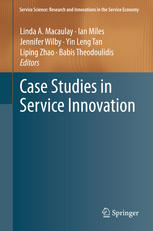

Most ebook files are in PDF format, so you can easily read them using various software such as Foxit Reader or directly on the Google Chrome browser.
Some ebook files are released by publishers in other formats such as .awz, .mobi, .epub, .fb2, etc. You may need to install specific software to read these formats on mobile/PC, such as Calibre.
Please read the tutorial at this link: https://ebookbell.com/faq
We offer FREE conversion to the popular formats you request; however, this may take some time. Therefore, right after payment, please email us, and we will try to provide the service as quickly as possible.
For some exceptional file formats or broken links (if any), please refrain from opening any disputes. Instead, email us first, and we will try to assist within a maximum of 6 hours.
EbookBell Team

0.0
0 reviewsCase Studies in Service Innovation provides the reader fresh insight into how innovation occurs in practice, and stimulates learning from one context to another. The volume brings together contributions from researchers and practitioners in a celebration of achievements with the intention of adding to the wider understanding of how service innovation develops. Each case presents a brief description of the context in which the innovation occurred, the opportunity that led to the innovation and an overview of the innovation itself, also addressing how success was measured, what success has been achieved to date and providing links to further information.
The book is organized around five major themes, each reflecting recognized sources of service innovation: Business Model Innovation: new ways of creating, delivering or capturing economic, social, environmental and other types of value; The Organization in its Environment: an organization engaging beyond its own boundaries, with public private partnerships, sourcing knowledge externally, innovation networks, and open or distributed innovation; Innovation Management within an Organization: an organization actively encouraging innovation within its own boundaries using project teams, internal governance of innovation, and methods or tools that stimulate innovation; Process Innovation: changes in service design and delivery processes, such as consumer led innovation or consumers as part of the innovation process, service operations management, and educational processes; Technology Innovation: the use of technology, including ICT enabled innovation, ICTs that are themselves innovative and support the delivery of new services, new ICT services, new ways of delivering services associated with ICT products, and technology other than ICT.
The final part of the book is given to four extended cases allowing for a more in-depth treatment of innovation within a complex service system. The extended cases also illustrate two important and growing trends, firstly the need for, and benefits of, a more customer centric approach to service innovation and secondly the need for better understanding of public services and the role of public-private partnerships in identifying and achieving innovation.